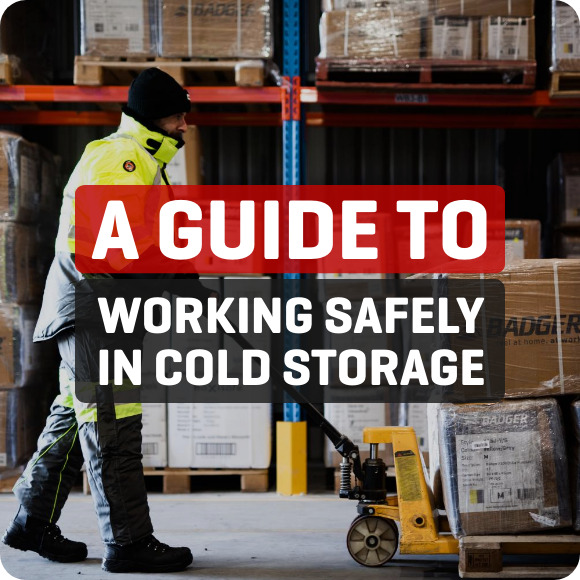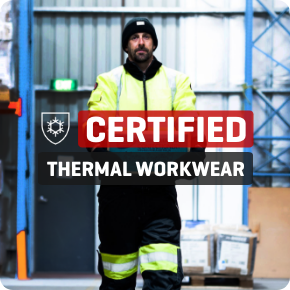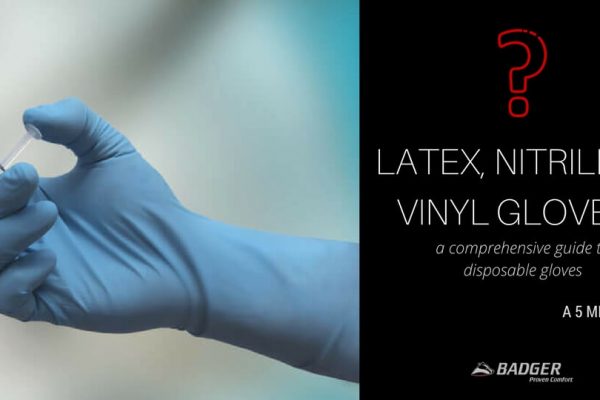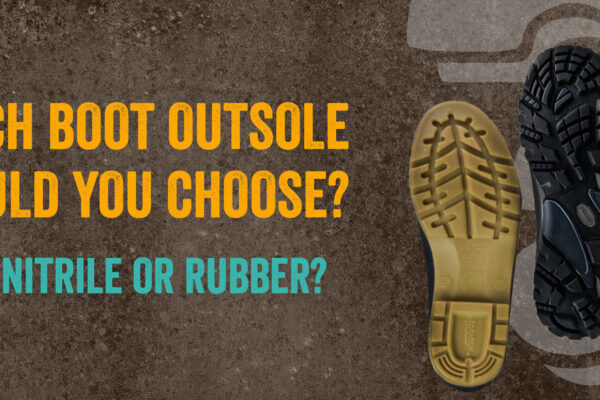The Glove Glossary; a comprehensive guide to glove terminology
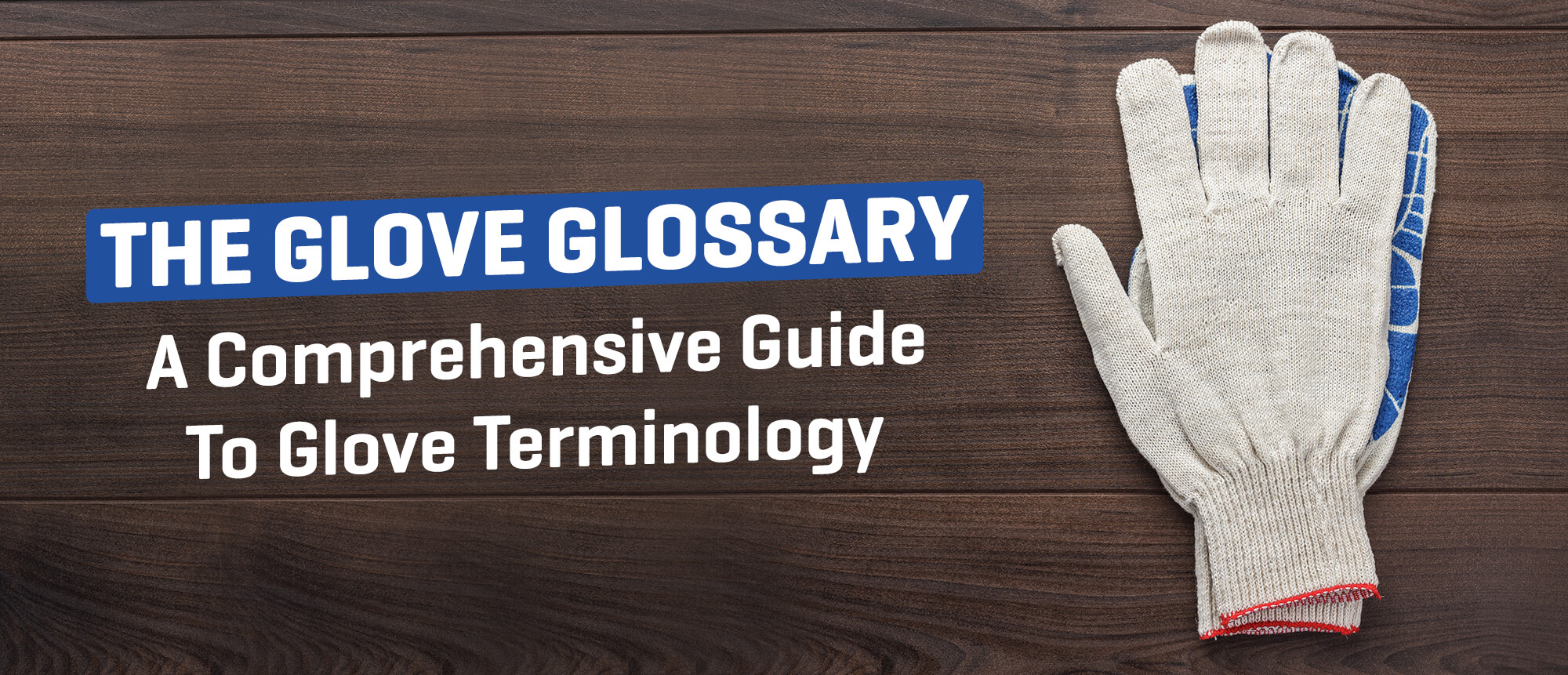
Ever had an expert or adviser rattle off a sentence of technical jargon that makes your eyes glass over?
As part of our committal to make it easy for your company to comply, we will be compiling safety glossaries for various product categories and types so you can easily learn and understand technical terms and jargon.
The Glove Glossary
Abrasion: This is the term often used when referring to the palm of a glove wearing out. Gloves with higher abrasion resistance generally have a longer lifespan.
Abrasion Resistance: A fabric’s ability to resist wear when it’s continuously rubbed against another surface. This is measured as part of the EN388 rating.
Anti-Impact: Anti-impact gloves have padding on the back of the hand and fingers to prevent metacarpal injuries and punctures.
Anti-Vibration: Often confused with anti-impact, anti-vibration gloves have padding on the palm of the hand, rather than the back, to reduce the impact of vibrating machinery.
Bleed: In glove terms, they occurs when dye transfers to the wearer’s hands. This occurs when the gloves are not color fast.
Breakthrough Time: Breakthrough time is the number of minutes it takes a chemical to break through a glove and come in contact with your hand.
CE Rating: A CE rating, sometimes called CE marking, is a conformity marking that must be printed on a product for it to be legally sold in the European Economic Area.
Clute Cut: The clute cut pattern is designed to keep the palm free of stitching. On the palm side, the palm and all four fingers are cut from one piece of leather. On the back side, each finger is a separate piece of leather.
Colour coding: The wrists on some gloves are coloured, which signifies what size the glove is. I.e. white is extra small, red is small, green is medium, brown is large, blue is extra large and so on.
Cotton: Cotton is a common fabric used in gloves that offer basic abrasion protection, and is generally the most economical option. Cotton is soft, breathable, absorbent, lightweight and durable.
Cowhide: Leather from full-grown cows. Cowhide is the most popular leather because it is economical and is easy to source.
Cuff: The cuff is the material extending past the palm of the hand and down the forearm to give extra protection. See also: Knit Wrist, Safety Cuff & Gauntlet, which are the main types of cuff.
Cut Proof: This term is a safety misconception…no glove is cut proof. See also: cut resistance.
Cut Resistance: Cut resistance refers to a glove or sleeve’s ability to withstand cuts from sharp objects. Hand protection can be rated under two different standards — ANSI and EN 388.
Deerskin: Deerskin has high flexibility and dexterity because it is very soft. It is regarded as one of the best leather for gloves, but doesn’t always last very long.
Dipped Gloves: A fabric “glove” stretched over a mold and then dipped into a polymer to provide a sealed or coated palm. See also: polymers.
Donning: Simply, this means putting gloves on your hand/s.
Drivers’ Glove: A slip-on style, full leather glove. See also: riggers glove
Fabric Weight – Usually expressed as a number, this is the weight of a full square metre of fabric that the glove is sewn from.
Freezer Glove: A thermal glove that provides protection down to -20°C. In Australia there are no standards specifying what is a freezer glove and what isn’t, but the relevant European standard is EN511.
Full Grain: Full grain leather has the original grain surface of the skin where only the hair has been removed. Because it is in it’s natural state full grain leather is generally stronger and more durable.
Gauntlet: A very long cuff that protects the forearm. Gauntlet cuffs are commonly found on welding and chemical gloves.
Gauge: A gauge refers to the thickness of the yarn that’s used in the construction of a knitted glove. It refers to the number of stitches per square inch of fabric, so the higher the gauge the thinner the fabric/glove.
Grain: The outer surface of the hide used in leather gloves.
Gusset: A piece of leather sewn between the fingers, also called side wall or fourchette.
Hem: The edge of the cuff.
Interlock Lining: The inside of the glove, which is generally made of lightweight cotton interlock knit fabric.
Kevlar: Kevlar®is a material commonly used in military garments, due to it being 5 times stronger than steel, while still being lightweight, flexible and comfortable. Its high resistance to hazards such as chemicals, heat, flames, cuts and breaking make it a great option for glove material or stitching. It is more pricey than other materials, however.
Keystone Thumb: A classic thumb design, commonly used for leather gloves such as riggers gloves.
Knit Wrist: A knit wrist is a knitted material, mostly from a stretchy fabric such as cotton, to protect the wrist.
Knuckle Strap – A strip or band of leather across the knuckle area to provide additional bump and protection.
Latex: Latex is a natural rubber product commonly used in disposable gloves. It protects against contaminants and chemicals and is popular because it provides great dexterity and comfort. It is cheaper than synthetic versions, such as nitrile, but some people are allergic to it.
Leather: Animal hide, commonly used as a primary glove material thanks to its superior hardiness and dexterity.
Neoprene: A synthetic rubber with a high chemical and heat resistance, commonly used in wetsuits. Because of its flexibility and durability it is often used as a cuff or knuckle strap on gloves, such as Badger’s UltraChill.
Nitrile: Nitrile is another very common material used in gloves. It acts as a synthetic latex (see also: Latex), but also has superior resistance to puncture and abrasion. It is also used as a palm dip on dipped gloves. See also: dipped gloves
Nylon: Nylon is a synthetic fiber which is lightweight, exceptionally strong, resilient and abrasion resistant, making it a great option for glove material.
Palm Coating: As the name suggests, this coating or ‘dip’ only covers the palm of the hand. Common dips include nitrile, polyurethane, latex, or PVC, and add puncture resistance, abrasion resistance and moisture resistance. See also: dipped gloves
Polymer: A material/substance such as PVC, vinyl, neoprene, nitrile, or rubber that can be liquefied and used as a coating on gloves.
Polyurethane (Poly): A synthetic material with high abrasion resistance that offers the elasticity of rubber combined with the toughness and durability of metal.
Powdered: A glove that is dusted with corn starch or something similar for moisture absorption and easy ‘donning’. See also: donning
Puncture Resistant: Because of their natural, woven or stitched construction, materials such as cotton, leather, aramids, and nylons are unable to stop sharp objects from penetrating through the material. By applying processes such as dipping or coating, a material such as nitrile can be added to add puncture resistance.
Riggers Glove: Similar to a drivers glove, a slip on style, hardy glove, often leather.
Safety Cuff: A cuff with a slit opening on the side which allows the wearer to throw them off in the case of an emergency. Rigger gloves often have this cuff.
Tensile Strength (Tear Resistance): The construction of fibres in a glove material influences its tear resistance. It is measured as part of the EN388 rating.
Thermal: Thermal gloves have a lining that is woven to trap air particles and insulate the wearers hands from the heat or cold.
Thinsulate: Thinsulate® fibres are considered some of the best for insulating properties, and are much less bulky than others. Plus, they can be washed without loosing their warmth. This makes them very popular for use in thermal gloves. See also: freezer glove
Three-Quarter Dip: A three-quarter palm coating covers approximately three-quarters of the glove. See also: dipped gloves
Welder’s Glove: Gloves specially made to repel and resist welding sparks. Often a high quality leather with thermal insulation and a gauntlet cuff. See also: gauntlet cuff
Wing Thumb: The angled construction allows good flexibility with no seams on the palm side to obstruct work or cause fatigue. Found on welding, drivers, leather palm, and ergonomic gloves.
Supporting Sources: PalmFlex, SuperiorGlove

